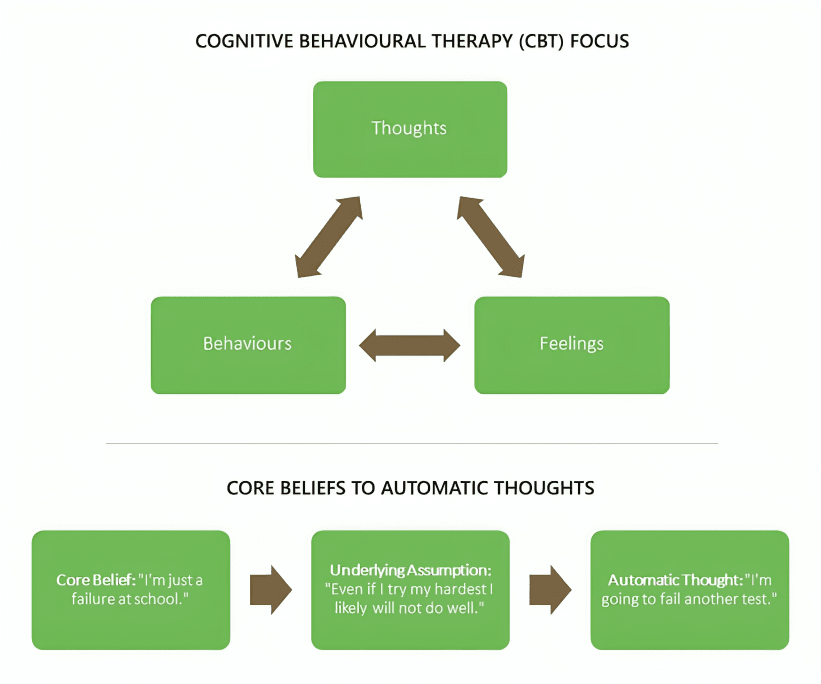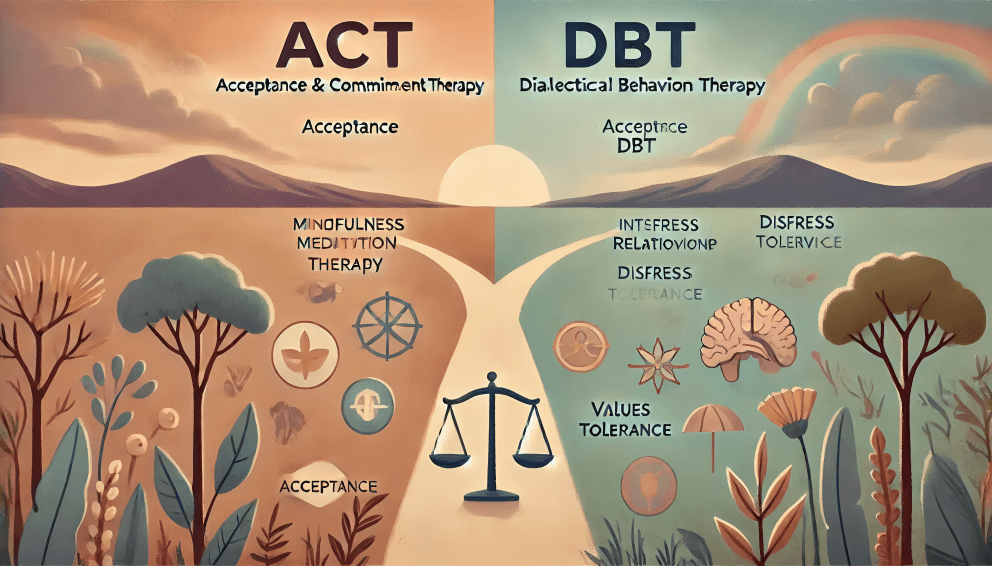
“
Cognitive behavioral therapy is a widely practiced and research-supported approach to mental health care. By helping individuals identify and change negative thinking patterns, cognitive behavioral therapy provides tools for lasting emotional resilience. 1
1
”
Cognitive Behavioral Therapy (CBT) was pioneered by Dr. Aaron T. Beck in the 1960s. While exploring psychoanalytic concepts, Beck found that internal thoughts strongly affect emotions and behavior. 1
CBT is grounded in the concept that our thoughts, feelings, and behaviors are interconnected. By altering negative thought patterns, individuals can experience changes in emotions and behaviors. 2
A hallmark of CBT is its collaborative nature. Therapists and clients work together to identify problematic thoughts and behaviors, set goals, and develop strategies for change, fostering a sense of empowerment in clients.3
CBT incorporates various techniques, such as cognitive restructuring, behavioral experiments, and exposure therapy, tailored to address specific issues like phobias or obsessive-compulsive behaviors. 4
Homework assignments are integral to CBT, reinforcing skills learned during sessions. Tasks like journaling or practicing new behaviors outside therapy sessions enhance the generalization of therapeutic gains to real-life situations. 5
CBT is adaptable and has been modified to suit various formats, including individual, group, and online therapy sessions. This flexibility increases accessibility and allows for personalized treatment approaches. 6
Unlike some therapies that delve extensively into past experiences, CBT is present-focused and goal-oriented. It emphasizes current problems and practical strategies to address them. 7
The principles of CBT have been integrated into self-help resources, enabling individuals to apply CBT techniques independently. Books and online programs based on CBT principles offer tools for managing stress and anxiety. 8
CBT's structured approach makes it suitable for short-term therapy, often involving 5 to 20 sessions. This time-limited nature appeals to individuals seeking efficient and focused therapeutic interventions.9

CBT focuses on identifying "automatic thoughts"—subconscious thoughts that affect emotions and actions—and helps individuals challenge and reframe them for balanced thinking.
CBT has been effectively applied to treat insomnia by addressing the thoughts and behaviors that disrupt sleep. CBT for insomnia (CBT-I) is considered a first-line treatment for chronic sleep difficulties. 10
In the realm of chronic pain management, CBT helps individuals develop coping strategies, reduce pain-related distress, and improve physical functioning, highlighting its versatility beyond mental health conditions. 11
CBT has been adapted for children and adolescents, addressing issues like anxiety, depression, and behavioral problems. Therapists use age-appropriate techniques to engage younger clients effectively. 12
The integration of mindfulness practices into CBT has led to the development of Mindfulness-Based Cognitive Therapy (MBCT), which is particularly effective in preventing relapse in depression. 13
The digital age has seen the emergence of computerized CBT (CCBT) programs, offering interactive, self-guided therapy options that increase accessibility and convenience for users. 14

CBT's principles have influenced various therapeutic modalities, including Dialectical Behavior Therapy (DBT) and Acceptance and Commitment Therapy (ACT), demonstrating its role in modern psychotherapy.
CBT has been effectively utilized in treating substance use disorders, helping individuals identify triggers, develop coping strategies, and prevent relapse through cognitive and behavioral interventions. 15
The structured nature of CBT facilitates outcome measurement, allowing for the assessment of progress and effectiveness through standardized tools and client feedback. 16
CBT has been incorporated into preventive mental health programs, aiming to equip individuals with skills to manage stress and emotional challenges before they escalate into clinical disorders. 17
CBT’s roots trace back to Stoic philosophers like Epictetus, who believed that "people are disturbed by their views, not events," aligning with CBT’s focus on changing thought patterns to transform emotions. 18


